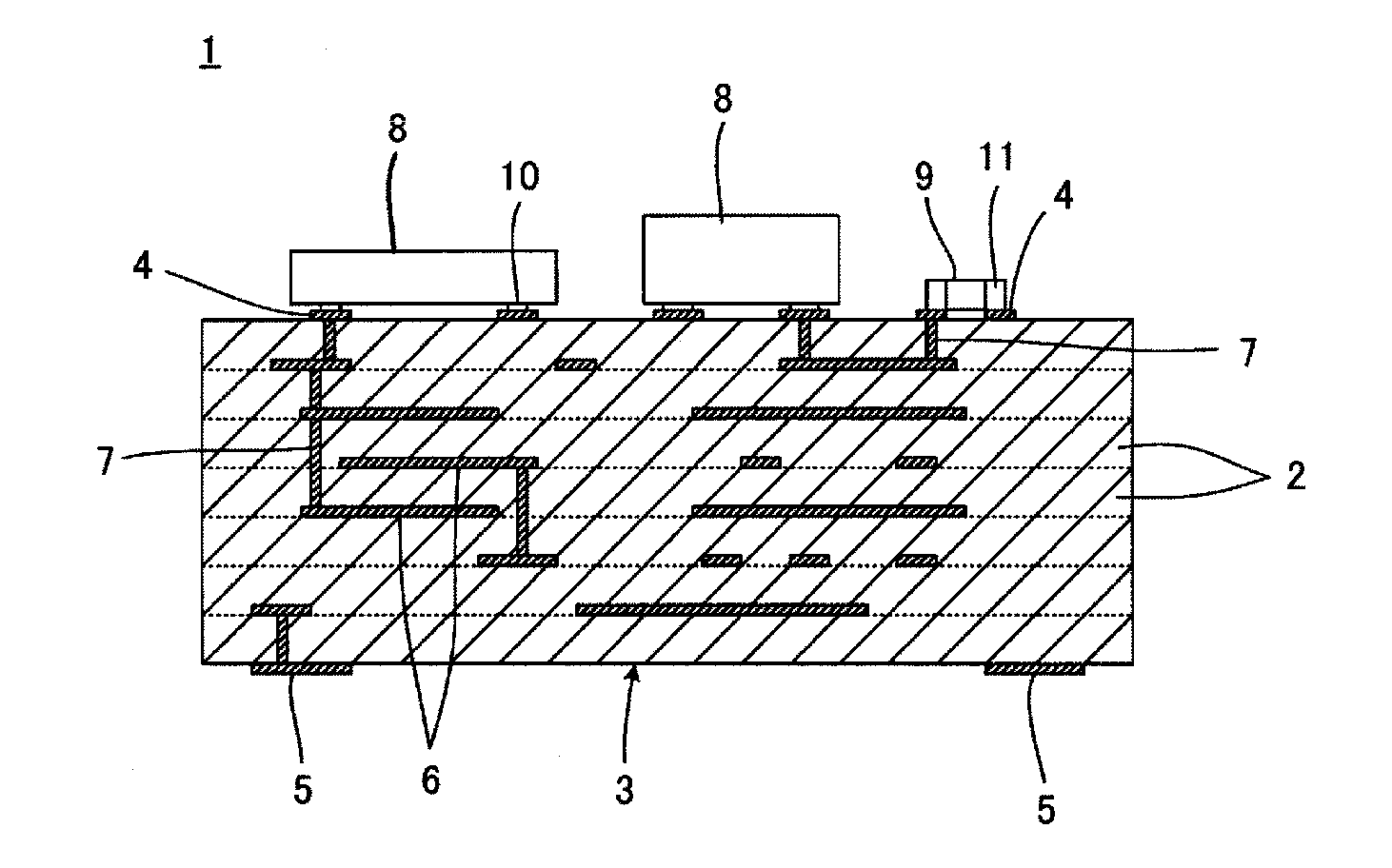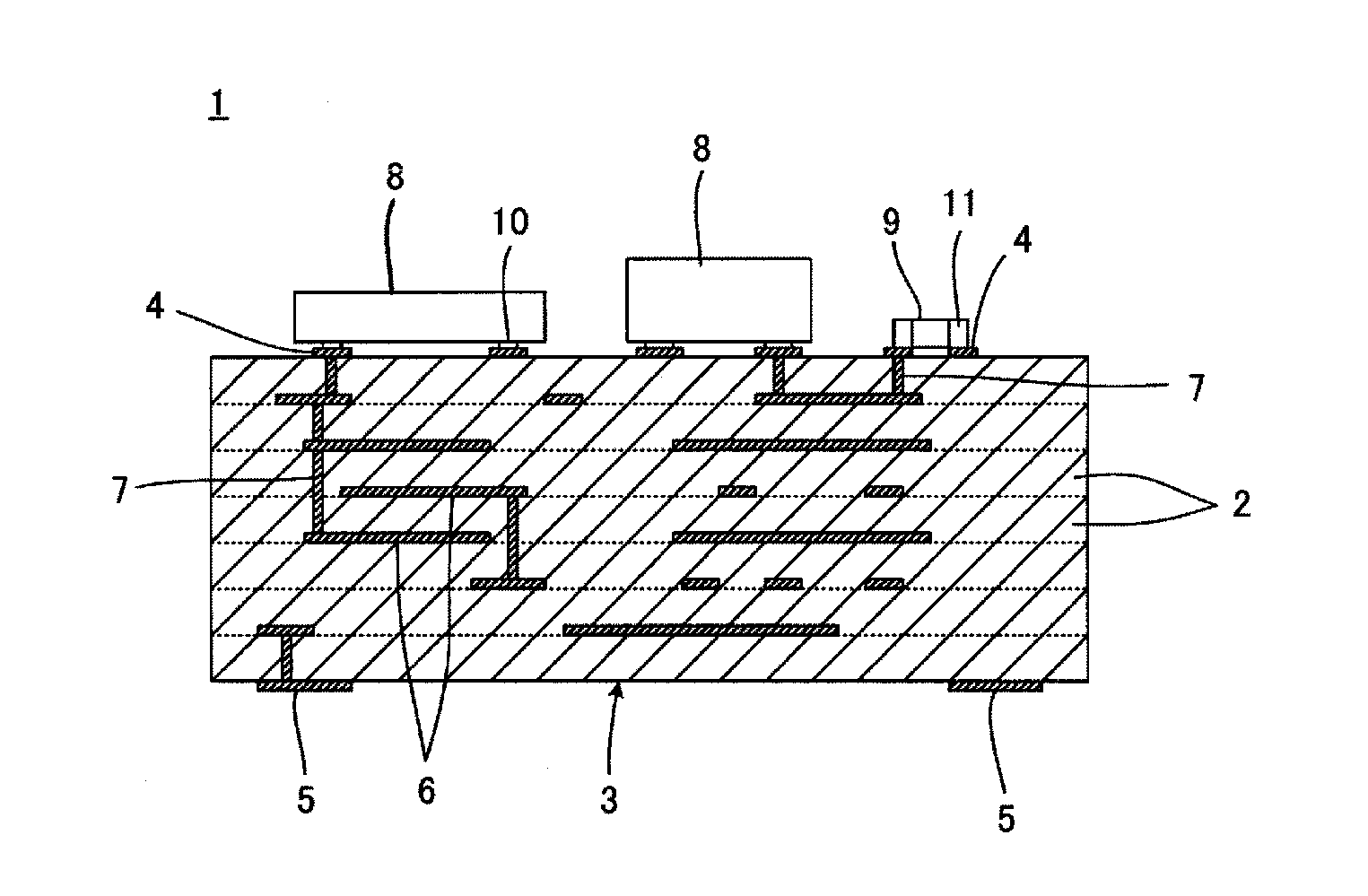Sintered body of low temperature cofired ceramic and multilayer ceramic substrate
a cofired ceramic and low temperature technology, applied in the direction of thin material processing, printed circuits, electrical equipment, etc., can solve the problems of complex manufacturing process of substrates, boron which is likely to volatilize, and system requires the use of relatively expensive glass materials as starting raw materials, etc., to achieve easy manufacturing process of sintered bodies and less likely to fluctuate composition
- Summary
- Abstract
- Description
- Claims
- Application Information
AI Technical Summary
Benefits of technology
Problems solved by technology
Method used
Image
Examples
experimental example
[0055]Next, an experimental example will be described which was carried out for confirming the effects and advantages of preferred embodiments of the present invention.
[0056]First, respective ceramic powders of SiO2, BaCO3, Al2O3, MnCO3, TiO2, and Mg(OH)2 each with a grain size of 2.0 μm or less were prepared as starting raw materials. Next, these starting raw material powders were weighed so as to provide the composition ratios shown in Table 1 after firing, subjected to wet mixing and grinding, and then to drying, and the obtained mixtures were subjected to calcination at 750° C. to 1000° C. for 1 to 3 hours to obtain raw material powders. The BaCO3 is turned into BaO after the firing, the MnCO3 is turned into MnO after the firing, and the Mg(OH)2 is turned into MgO after the firing.
[0057]It is to be noted that in Table 1, the main constituent ceramic material of SiO2, BaO, and Al2O3 is shown in terms of weight % (wt %), and the SiO2, BaO, and Al2O3 account for 100 weight % in tot...
PUM
| Property | Measurement | Unit |
|---|---|---|
| crystal grain size | aaaaa | aaaaa |
| temperature | aaaaa | aaaaa |
| specific dielectric constant ∈r | aaaaa | aaaaa |
Abstract
Description
Claims
Application Information
 Login to View More
Login to View More - R&D
- Intellectual Property
- Life Sciences
- Materials
- Tech Scout
- Unparalleled Data Quality
- Higher Quality Content
- 60% Fewer Hallucinations
Browse by: Latest US Patents, China's latest patents, Technical Efficacy Thesaurus, Application Domain, Technology Topic, Popular Technical Reports.
© 2025 PatSnap. All rights reserved.Legal|Privacy policy|Modern Slavery Act Transparency Statement|Sitemap|About US| Contact US: help@patsnap.com


